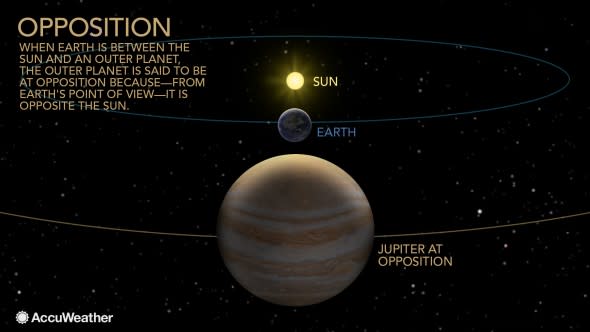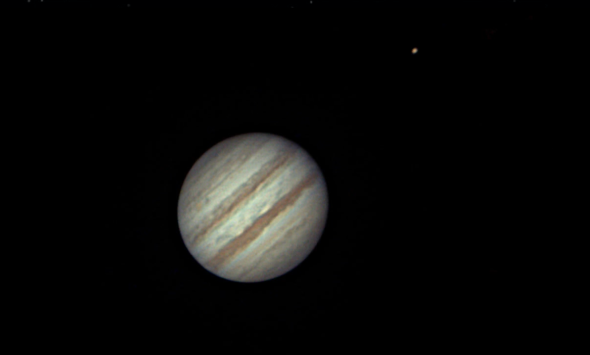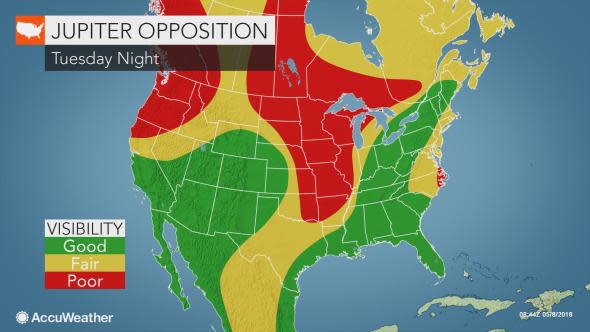Jupiter opposition: The planet will be at its brightest on Tuesday night
This week will bring the best opportunity of the entire year for viewing Jupiter in the sky as it will shine bright all night long while it reaches opposition.
On the night of Tuesday, May 8, into the morning of Wednesday, May 9, Jupiter will be at opposition. This means that Jupiter will be on the opposite side of the Earth than the sun.
When a planet like Jupiter is at opposition, it is near the point in its orbit where it is closest to the Earth, making it appear brighter than it does during any other time in its orbit.
It also means that Jupiter will be visible all night long, rising in the East around sunset and setting to the West around sunrise.

No telescope is needed to view Jupiter as it is one of the brightest natural objects in the night sky, standing out among the sea of countless stars.
However, those with a telescope or good pair of binoculars will be able to see what are known as the Galilean Moons.
The Galilean Moon are Jupiter's four largest moons, and were first discovered by Galileo Galilei in 1610. Depending on the night, IO, Europa, Ganymede and Callisto may all be visible.
In addition to seeing the four moons, a larger telescope will reveal the bands of colorful clouds in Jupiter's atmosphere.

Jupiter and one of its moon as seen through a telescope. (Photo/Charlie Golden)
Stargazers across the southwestern United States have the best chance for cloud-free conditions on Tuesday night for viewing Jupiter.
Some clouds may interfere with early evening viewers across the eastern U.S., but most clouds that are around in the evening should gradually clear as the night progresses.
Meanwhile, a storm tracking across the Plains will spread clouds, showers and drenching storms across much of the central U.S. Another storm arriving in the Pacific Northwest will also spread clouds across much of the region.

If clouds obscure Jupiter on Tuesday night, observers will have plenty of more opportunities to view the planet in the coming weeks as Jupiter will remain in the night sky heading into the summer.
However, the brightness of the planet will slowly decrease as the Earth and Jupiter grow father and farther away from each other.
Additionally, Jupiter will set earlier and earlier each night in the coming months before it disappears from the night sky in August as it passes behind the sun.
This week's planetary opposition is the first of three that will occur in the coming months.
On June 27, Saturn will reach opposition. Although the planet is nearly twice as far away from Earth than Jupiter, it is still visible to the naked eye.
Those with access to a good telescope should plan to peer through the eyepiece on the days surrounding Saturn's opposition as it will revel the planet's breathtaking rings.
One month after Saturn reaches opposition, Mars will gain the attention of stargazers as it reaches opposition.
Around the time that it reaches opposition, Mars will also make its closest approach to Earth since 2003.
This close approach will make this year a particularly good time to view our neighboring planet as it will appear brighter than it has in over a decade.
Questions or comments? Email Brian Lada at Brian.Lada@accuweather.com and be sure to follow him on Twitter!
Follow @wxlada
